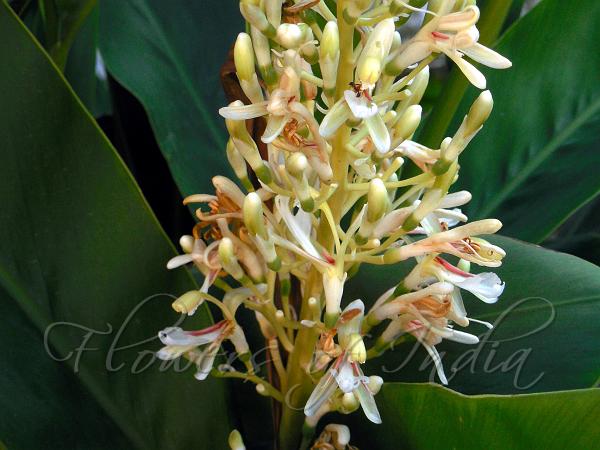|
| Galangal |
|

|

| File size | 503410 |
| Original date | 7/21/14 4:41 PM |
| Resolution | 1704 x 1278 |
| Flash | Flash did not fire, auto |
| Focal length | 14.1mm |
| Exposure time | 1/125s |
| Aperture | 4.5 |
| Focus Distance | |
| Metering Mode | Multi-segment |
| Camera make | NIKON |
| Camera model | COOLPIX L620 |
| Sensor type |
|
|
|
|
Photo: |
Botanical name: Alpinia galanga Family: Zingiberaceae (Ginger family)
Synonyms: Alpinia carnea, Alpinia alba, Alpinia viridiflora
Synonyms: Alpinia carnea, Alpinia alba, Alpinia viridiflora
Galangal grows to a height of about 5 feet, the
leaves being long, rather narrow blades, and the flowers, of curious
formation, growing in a simple, terminal spike, the petals white, with
deep-red veining distinguishing the lip-petal. The ranched pieces of
rhizome are from 3.5-7.5 cm in length, and seldom more than 2 cm thick.
They are cut while fresh, and the pieces are usually cylindrical,
marked at short intervals by narrow, whitish, somewhat raised rings,
which are the scars left by former leaves. They are dark reddish-brown
externally, and the section shows a dark centre surrounded by a wider,
paler layer, which be comes darker in drying. Their odour is aromatic,
and their taste pungent and spicy. Galangal is a very popular spice in
whole South East Asia and especially typical for the cuisine of
Thailand. It is also known and used in Malaysia, Indonesia, Cambodia,
Vietnam and Southern China.
| Identification credit: Krishan Lal | Photographed in Himachal Pradesh & Manipur. |
• Is this flower misidentified? If yes,